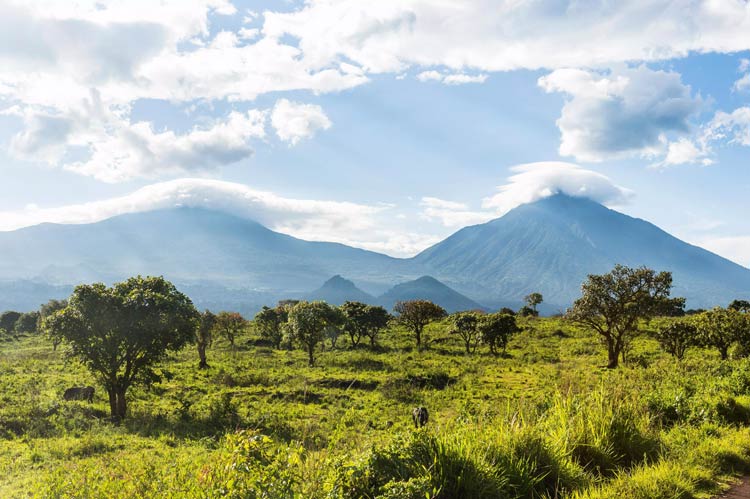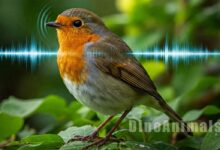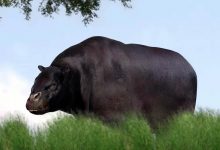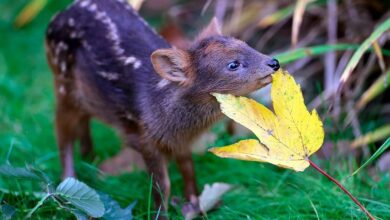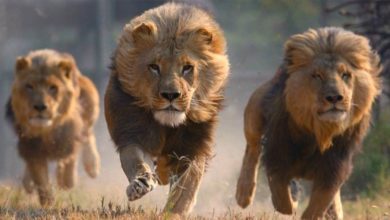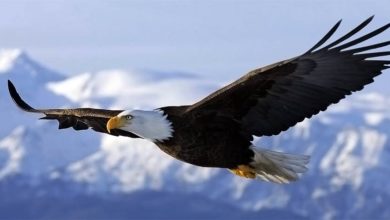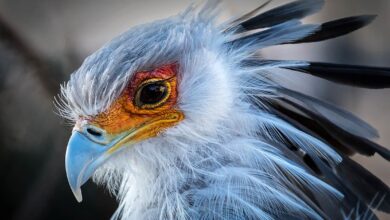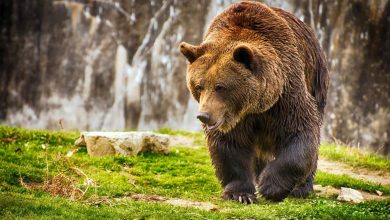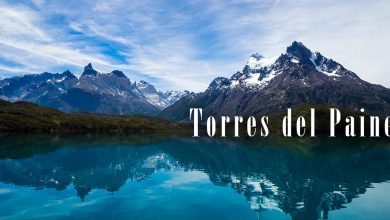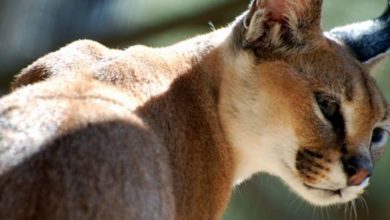Discover the Majestic Wonders of Virunga National Park
Virunga National Park is a natural wonderland, located in the heart of Central Africa. The park is a mosaic of habitats, including dense tropical rainforests, sprawling savannahs, and towering volcanic peaks. Its diverse ecosystems support an incredible array of wildlife, from majestic Mountain gorillas and chimpanzees to graceful forest elephants and rare okapi. The park is also home to some of the world’s most active volcanoes, including the towering Mount Nyiragongo, which looms over the landscape with its smoldering lava lake. Despite facing numerous threats, such as armed conflict and illegal exploitation, Virunga National Park remains a global symbol of conservation and hope, and a testament to the resilience of nature.
Virunga National Park is a UNESCO World Heritage site located in the Democratic Republic of Congo. It covers over 7,800 sq km and is home to a diverse range of flora and fauna, including gorillas, elephants, lions, and birds. Despite its rich biodiversity, the park has faced numerous challenges, including poaching. Despite these challenges, Virunga National Park remains a unique and important conservation area in Africa.
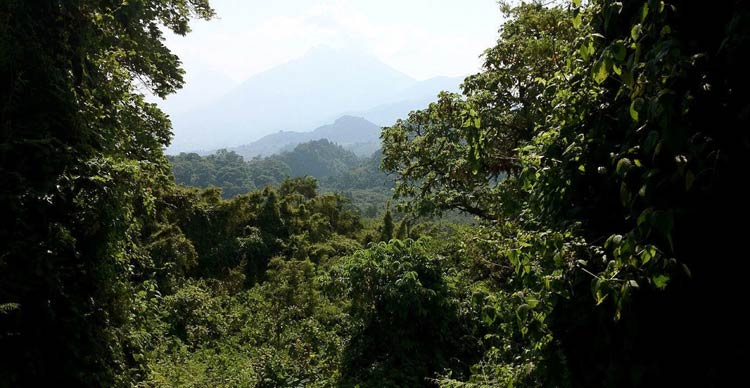
Location
Virunga National Park is located in the Democratic Republic of Congo (DRC), bordering Rwanda and Uganda in East Africa.
History and name of the Park
Virunga National Park was established in 1925 as Africa’s first national park and is the oldest national park in the continent. It was initially known as Albert National Park, named after King Albert I of Belgium. In 1969, the park was renamed Virunga National Park after the Virunga Mountains, which are located within the park’s boundaries and are home to several species of endangered gorillas. The park has a rich cultural and historical heritage, and its creation helped lay the foundation for the modern conservation movement in Africa.
Geography
Virunga National Park covers an area of over 7,800 sq km and is located in the Albertine Rift Valley in the Democratic Republic of Congo. The park is situated between the Rwenzori Mountains in the north and Lake Kivu in the south, and it encompasses a diverse range of landscapes, including forests, savannas, lakes, and active volcanoes. The park is known for its rich biodiversity and is home to a large number of endemic species, including gorillas, elephants, lions, and birds. The park is also home to the Nyiragongo and Nyamuragira volcanoes, which are some of the most active in the world.

Features of the park
Virunga National Park has several unique features, including:
- Rich Biodiversity
the park is home to a diverse range of wildlife, including gorillas, elephants, lions, and over 700 species of birds. - Volcanoes
the park includes two active volcanoes, Nyiragongo and Nyamuragira, which are some of the most active in the world. - Lakes and rivers
the park contains several important lakes, including Lake Edward and Lake Kivu, and several major rivers, including the Rwindi and Rutshuru rivers. - Cultural and historical heritage
the park has a rich cultural and historical heritage, including several ancient kingdoms and the remains of several early human species. - Unique landscapes
the park encompasses a variety of landscapes, including forests, savannas, lakes, and mountains, each with its own unique biodiversity. - Geothermal activity
the park’s geothermal activity, including hot springs and geysers, supports unique habitats for various species of plants and animals. - World Heritage site
Virunga National Park is a UNESCO World Heritage site, recognized for its exceptional natural beauty and unique biodiversity.
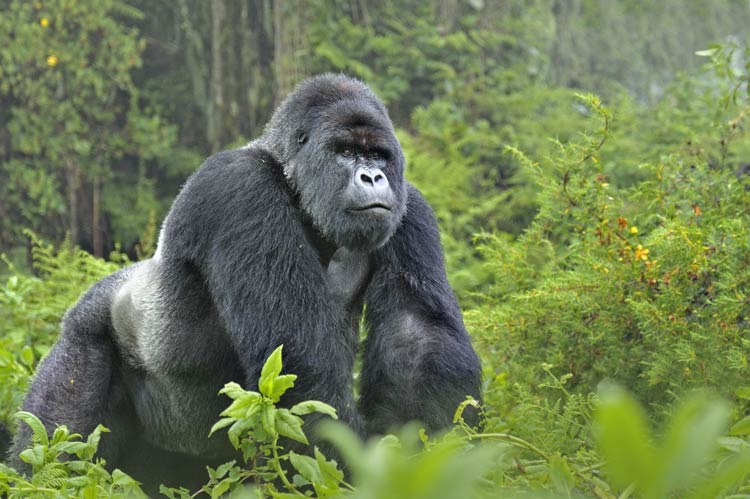
Geology
Virunga National Park is located in the East African Rift System and is part of the Albertine Rift Valley. The park’s unique geology has helped shape its diverse landscapes and ecosystems, including the volcanoes, lakes, and rivers within its boundaries. The park is home to two active volcanoes, Nyiragongo and Nyamuragira, which are some of the most active in the world.
The park’s geothermal activity has also created several hot springs and geysers, which support unique habitats for various species of plants and animals. The park’s diverse geology has also helped preserve important geological formations and fossils, providing valuable insights into the region’s geological history.
Climate
Virunga National Park has a tropical highland climate, with average temperatures ranging from 15 to 20°C. The park experiences two rainy seasons, with the heaviest rainfall occurring between March and May and lighter rainfall between September and December.
The park’s elevation and location in the Albertine Rift Valley result in varying microclimates, with higher elevations being cooler and wetter. The park’s climate is an important factor in supporting its diverse ecosystems and biodiversity, including its forests, savannas, and lakes.
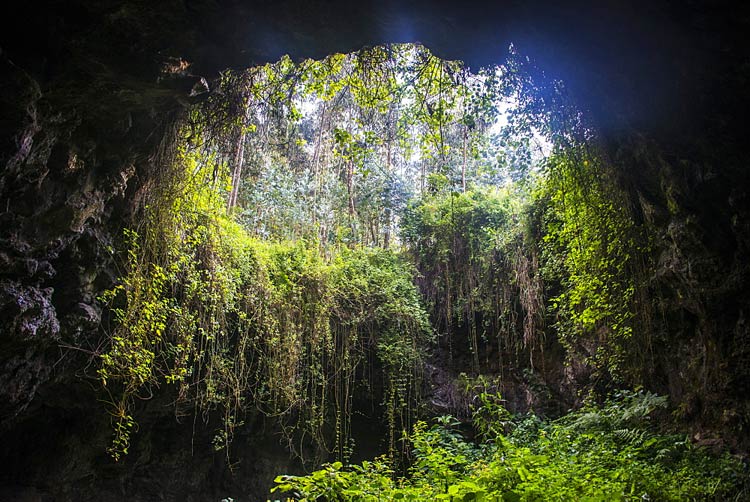
Mineral deposits
Virunga National Park is known to contain several valuable mineral deposits, including oil, gas, cobalt, tin, and gold. The park’s oil reserves, in particular, have been the subject of exploration and exploitation efforts for several decades. However, the exploitation of these resources has often been in conflict with the park’s conservation efforts and has been associated with various environmental and social impacts.
The park’s mineral resources have also been a source of conflict and violence, with armed groups and local communities vying for control over these resources. The park’s minerals remain a crucial resource for the region and the country, and their extraction continues to be a challenge for balancing conservation and development.
Park on UNESCO list
Virunga National Park is a UNESCO World Heritage site, designated as such in 1979. The park was inscribed on the World Heritage List for its exceptional natural beauty and unique biodiversity, including the diversity of its landscapes and ecosystems, as well as its rich cultural and historical heritage. The park is home to several endangered species, including gorillas, elephants, and lions, and is considered one of the most important conservation areas in Africa.
The World Heritage designation recognizes the park’s global importance and provides support for its conservation efforts. However, the park continues to face numerous challenges. Despite these challenges, Virunga National Park remains a valuable part of the world’s natural and cultural heritage.
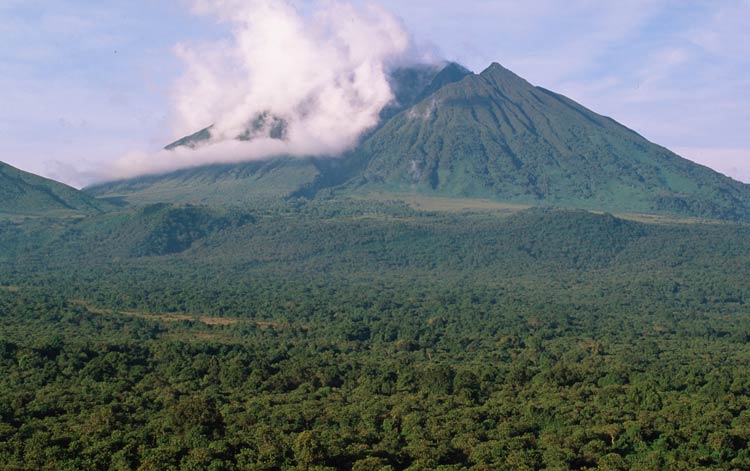
Threats
Virunga National Park faces numerous threats to its conservation and biodiversity, including:
- Illegal resource exploitation, such as oil and mineral extraction, and illegal charcoal production
- Armed conflict and violence, which has disrupted park operations and threatened both wildlife and park staff
- Poaching and illegal hunting, which have impacted the park’s wildlife populations, including gorillas, elephants, and lions
- Encroachment and habitat loss, as local communities expand their agricultural activities into the park
- Climate change, which is affecting the park’s ecosystems and biodiversity
These threats pose a significant challenge to the long-term conservation of Virunga National Park and its unique biodiversity. Despite these challenges, efforts are underway to protect the park and its wildlife, including increased security measures, community conservation initiatives, and efforts to mitigate the impact of climate change.
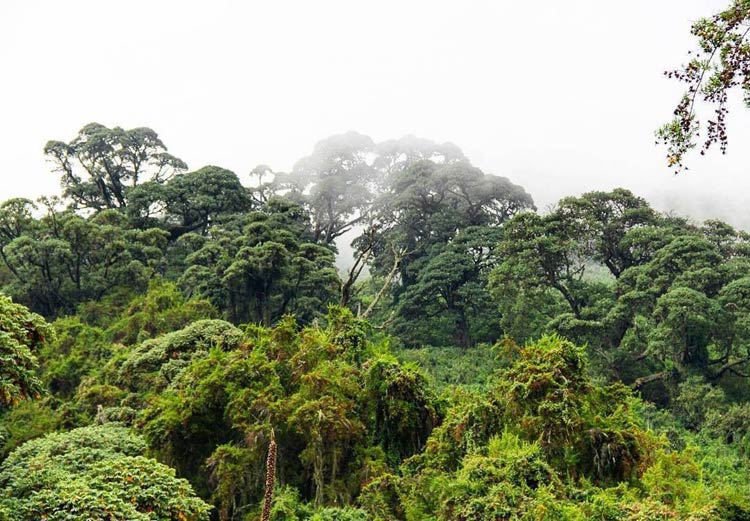
Flora in Virunga National Park
Virunga National Park has a diverse and unique flora, with over 4,000 plant species recorded in the park. The park’s varied landscapes and ecosystems support a range of vegetation, including:
- Montane forests: high-altitude forests with a rich diversity of tree species and undergrowth.
- Savannas: grasslands with scattered trees and shrubs, home to a variety of herbivores.
- Marshes: wetland habitats supporting a range of plant species adapted to flooded conditions.
- Volcanic landscapes: unique habitats created by the park’s volcanic activity, including hot springs and geysers.
- Lakeshores: the shores of the park’s lakes support a variety of aquatic and semi-aquatic plants.
Some of the notable plant species found in the park include the giant groundsel, lobelia, and senecio, as well as several species of orchids and ferns. The park’s unique flora is an important part of its biodiversity and supports its rich wildlife, including gorillas, elephants, and lions.
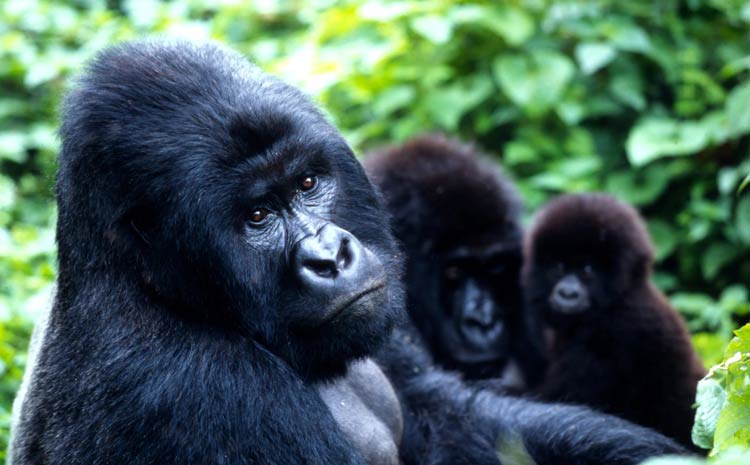
Fauna in Virunga National Park
Virunga National Park is home to rich and diverse wildlife, including several species of mammals, birds, reptiles, and amphibians. Some of the notable species found in the park include:
- Mountain gorillas
the park is home to a significant population of critically endangered mountain gorillas. - Elephants
the park is home to both forest and bush elephants. - Lions
Virunga National Park is one of the last remaining habitats for lions in Africa. - Chimpanzees
the park is home to a significant population of chimpanzees. - Birds
the park is home to over 700 species of birds, including several endemic species. - Reptiles
the park is home to a diverse range of reptiles, including several species of chameleons, geckos, and snakes. - Amphibians
the park is home to several species of frogs and toads, as well as a number of other amphibian species.
These species are an important part of the park’s biodiversity and are critical to the functioning of its ecosystems. However, several of these species, including gorillas, elephants, and lions, are threatened by poaching violence. Despite these threats, efforts are underway to protect the park’s wildlife and ensure their long-term survival.
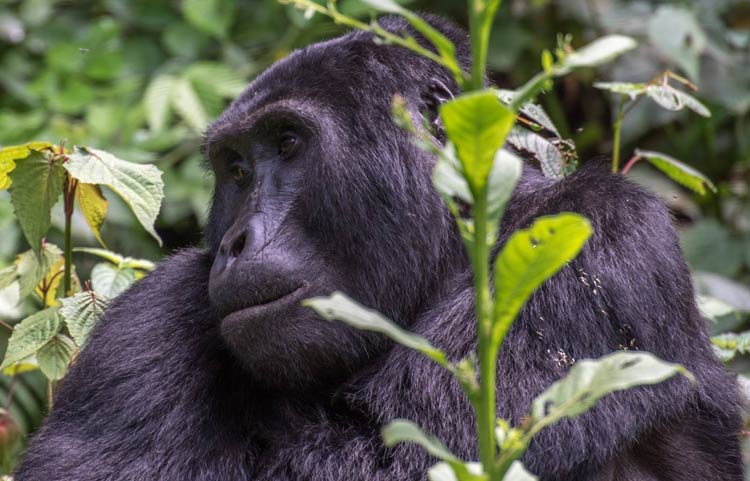
Eastern gorilla (Gorilla beringei)
The Eastern gorilla (Gorilla beringei) is a subspecies of the gorillas found in central and eastern Africa. It is one of the two subspecies of gorillas, the other being the Western gorilla. There are two populations of Eastern gorillas, one in the Virunga Massif, a range of dormant volcanoes in central Africa, and the other in the Bwindi Impenetrable National Park in Uganda. Eastern gorillas are the largest primates and are known for their close family bonds, complex social behaviors, and intelligence.
Unfortunately, Eastern gorillas are critically endangered, with fewer than 5,000 individuals remaining in the wild. The primary threats to Eastern gorillas are habitat loss and illegal poaching. Efforts are underway to protect and conserve Eastern gorillas, including habitat preservation and anti-poaching measures, as well as breeding programs in zoos and other captive facilities. The long-term survival of Eastern gorillas will depend on sustained conservation efforts to protect their habitats and reduce the threats they face in the wild.
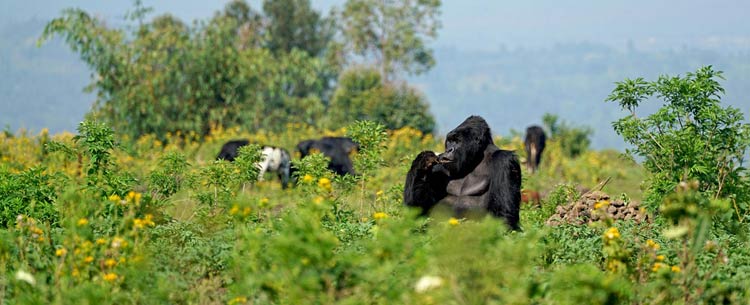
Mountain gorilla (Gorilla beringei beringei)
The Mountain gorilla (Gorilla beringei beringei) is a subspecies of the Eastern gorilla and is one of the two populations of Eastern gorillas. Mountain gorillas are found in the high-altitude forests of the Virunga Massif, a range of dormant volcanoes in central Africa, and in the Bwindi Impenetrable National Park in Uganda. These gorillas are known for their distinctive appearance, with longer fur and a broader chest compared to other gorillas. Mountain gorillas are also known for their close family bonds and complex social behaviors.
Unfortunately, Mountain gorillas are critically endangered, with an estimated population of just over 1,000 individuals. The primary threats to Mountain gorillas are habitat loss and poaching violence. Conservation efforts, including habitat preservation and anti-poaching measures, are underway to protect Mountain gorillas and ensure their long-term survival. In addition, ecotourism initiatives, such as guided gorilla trekking, provide an important source of income for local communities and support conservation efforts in the region.
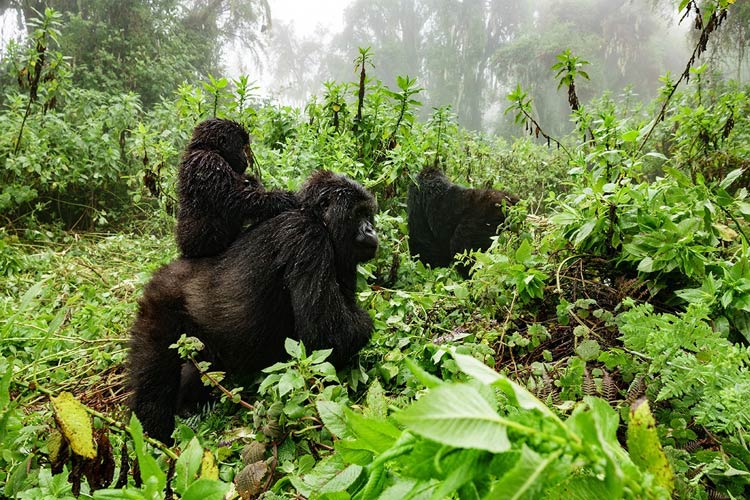
Tourism and tourist main attractions in the park
Virunga National Park is a popular tourist destination, known for its incredible biodiversity, stunning landscapes, and rich cultural heritage. The park offers a range of tourist activities, including:
- Gorilla trekking
Mountain gorillas are the park’s flagship species and a major draw for tourists. Guided gorilla trekking is the most popular tourist activity in the park, allowing visitors to get up close and personal with these incredible primates. - Wildlife viewing
Virunga National Park is home to rich and diverse wildlife, including elephants, lions, chimpanzees, and over 700 species of birds. Wildlife viewing is a popular tourist activity, with several opportunities to spot wildlife from the park’s roads and trails. - Hiking and trekking
The park is home to a range of hiking trails, including trails through the park’s forests, up its volcanoes, and along its lakeshores. - Cultural tours
The park is home to several local communities, including the Mbuti pygmies, and cultural tours are available to visit these communities and learn about their cultures and traditions. - Water activities
The park is home to several large lakes, including Lake Edward and Lake Kivu, and water activities, such as boating and fishing, are available.
These activities provide important economic benefits for local communities and support conservation efforts in the park. Additionally, the park’s spectacular scenery and rich wildlife provide a unique and unforgettable experience for visitors.
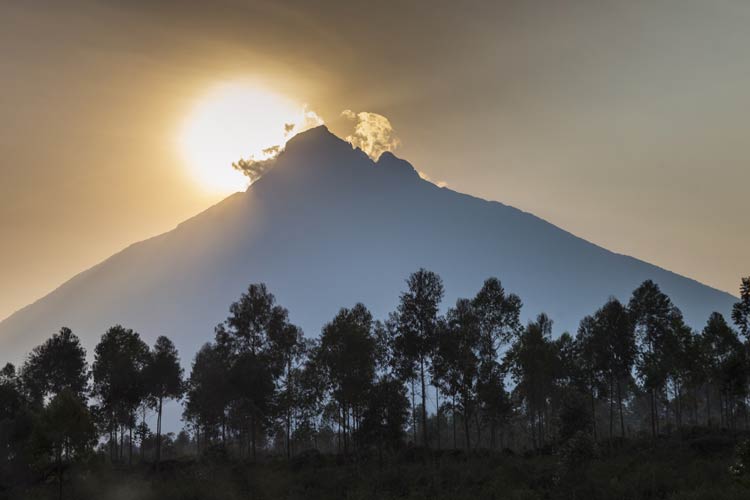
Mount Stanley in Virunga National Park
Mount Stanley is a mountain located in Virunga National Park in the Democratic Republic of the Congo. It is part of the Rwenzori Range, a chain of mountain peaks that runs along the border of DR Congo and Uganda. Mount Stanley is the highest peak in the Rwenzori Range and is one of the most prominent features of the park. It rises to an elevation of 5,109 meters (16,763 feet) above sea level and is surrounded by snow-capped peaks and glaciers.
Mount Stanley is a popular destination for trekkers and climbers, who come to explore the stunning scenery, glaciers, and high-altitude forests of the Rwenzori Range. The mountain is part of the Rwenzori Mountains National Park in Uganda, which is a UNESCO World Heritage Site.
Visitors to Mount Stanley must obtain a permit to enter the park and to hike or climb in the area. Guided tours are also available, and several trekking routes are available, including the challenging climb to the summit of Mount Stanley. The park provides a unique and unforgettable experience for visitors, who can explore its breathtaking scenery, rich wildlife, and rich cultural heritage.

How To Reach To Virunga National Park?
The easiest way to reach Virunga National Park is by flying to the city of Goma, which is located on the eastern border of the Democratic Republic of Congo.
- Visitors can fly to Goma from the country’s capital, Kinshasa, or from other regional airports.
- From Goma, visitors can arrange transportation to the park headquarters, which is located in the town of Rumangabo.
- The park headquarters can also be reached by road, although this can be a challenging journey due to poor road conditions and security concerns.
Once at the park headquarters, visitors can arrange guided tours and activities, such as gorilla trekking or hiking up Mount Nyiragongo.
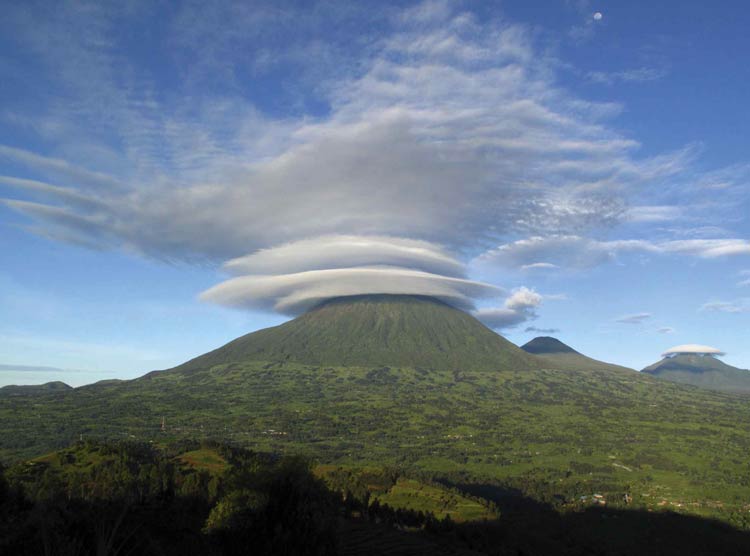
Best Time To Visit Virunga National Park
The best time to visit Virunga National Park is during the dry season, which runs from mid-May to mid-September. During this time, the weather is generally dry and mild, and the park’s trails are less muddy and easier to navigate. It’s also easier to spot wildlife during the dry season, as the animals tend to congregate around water sources.
The peak tourist season is from June to August, so visitors should plan ahead and make reservations in advance to avoid disappointment. However, visitors should be aware that Virunga National Park is located in a volatile region, and security concerns can sometimes affect travel plans. It’s important to stay informed of the current situation and heed any travel warnings or advisories.
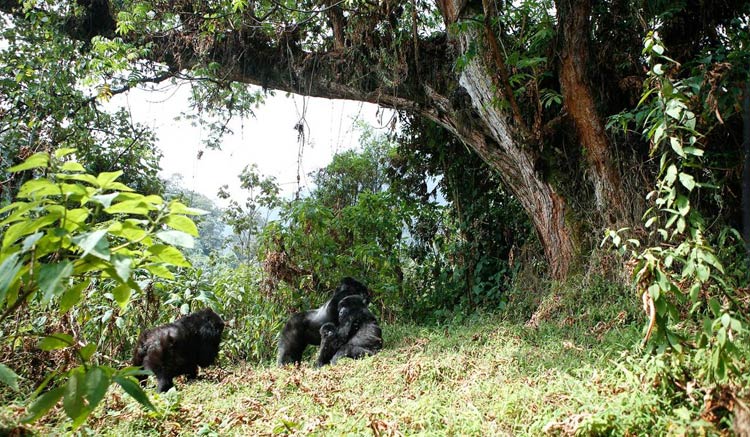
Conservation
Conservation efforts are underway in Virunga National Park to protect its unique and diverse ecosystems, wildlife, and cultural heritage. These efforts are led by the Institut Congolais pour la Conservation de la Nature (ICCN), with support from international conservation organizations and local communities.
The main goals of conservation in the park are to protect its wildlife, including its flagship species, the Mountain gorillas, and to preserve its natural habitats, including its forests, lakes, and rivers. To achieve these goals, a range of conservation measures have been implemented, including:
- Anti-poaching efforts
To protect the park’s wildlife, anti-poaching efforts are underway, including patrols, monitoring, and education programs. - Habitat protection
To protect the park’s habitats, measures are in place to prevent deforestation, protect wetlands, and promote reforestation. - Community involvement
Local communities are involved in conservation efforts in the park and receive support and benefits from conservation activities, such as ecotourism. - Research and monitoring
Scientific research and monitoring programs are in place to understand the park’s ecosystems and wildlife, and to identify and address any threats to their survival.
In addition to these measures, ecotourism initiatives, such as guided gorilla trekking, provide an important source of income for local communities and support conservation efforts in the park. By working together, these efforts aim to ensure the long-term survival of Virunga National Park and its incredible biodiversity, landscapes, and cultures
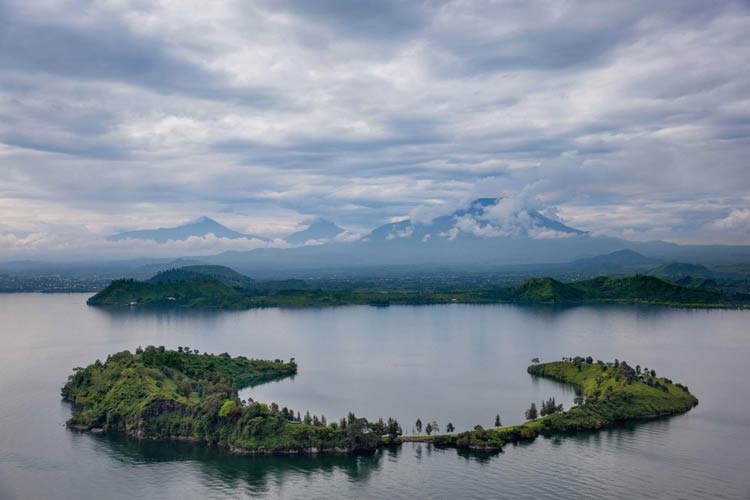
Tarzan
While the setting of Tarzan’s adventures remains a mystery, it is easy to see why Virunga National Park could have inspired the world of the jungle hero. With its dense forests, roaring waterfalls, and exotic wildlife, it is a place where adventure and danger lurk around every corner. Whether you are hiking to the summit of Mount Nyiragongo or tracking gorillas through the underbrush, Virunga National Park offers a glimpse into a world that feels untamed and untouched by human hands. It is no wonder that this remarkable place has captured the imaginations of explorers and adventurers for generations.
Could Virunga National Park be considered one of nature’s wonders?
Yes, Virunga National Park could be considered one of nature’s wonders. It boasts an incredible range of natural features, from towering volcanoes and misty forests to sparkling lakes and rushing rivers. The park is home to an extraordinary variety of wildlife, including endangered species such as mountain gorillas and forest elephants. It’s also a vital center for scientific research and conservation efforts, working to protect some of the most important ecosystems in Africa. Its natural beauty and cultural significance have earned it recognition as a UNESCO World Heritage Site. All of these factors make Virunga National Park a truly remarkable and wondrous place.
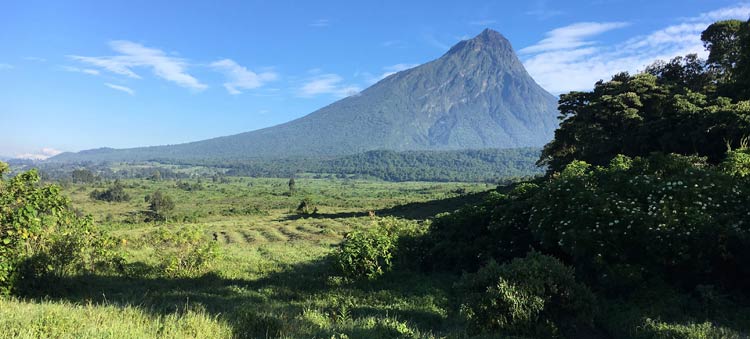
Interesting facts about Virunga National Park
- Oldest national park in Africa
Virunga National Park was established in 1925 and is the oldest national park in Africa. - Home to Mountain gorillas
Virunga National Park is one of only a few places in the world where visitors can see Mountain gorillas in their natural habitat. - Volcanic activity
The park is located in a region of active volcanic activity, and includes several active and dormant volcanoes, including Mount Nyiragongo. - Rich biodiversity
The park is home to an incredible diversity of species, including over 200 mammals, 706 bird species, and over 10,000 plant species. - UNESCO World Heritage Site
Virunga National Park is a UNESCO World Heritage Site and has been designated as such due to its unique and diverse natural and cultural features. - Threatened by conflict and poaching
The park has faced numerous threats over the years, including armed conflict and illegal exploitation of its natural resources, such as poaching of oil, gold and charcoal. - Conservation initiatives
Despite the challenges, conservation efforts are underway in the park to protect its wildlife and habitats, and to promote sustainable tourism and community development. - The first park to offer ecotourism
Virunga National Park was the first park in the world to offer ecotourism, allowing visitors to experience its stunning landscapes and incredible wildlife. - Film subject
The park has been the subject of several documentaries and films, including the award-winning film “Virunga,” which highlights the challenges faced by park rangers and the need for conservation efforts in the region. - Tarzan
The open-air setting of Virunga National Park can easily be imagined as the world of Tarzan and Jane, although the author of the series does not specify the exact location.

Q&A (questions and answers) about Virunga National Park
Q: Where is Virunga National Park located?
A: Virunga National Park is located in the Democratic Republic of Congo, in Central Africa.
Q: What is the history of Virunga National Park?
A: Virunga National Park was established in 1925 and is the oldest national park in Africa. It was created to protect its unique and diverse natural and cultural features, including its volcanoes, lakes, forests, and wildlife.
Q: What kind of wildlife can be found in Virunga National Park?
A: Virunga National Park is home to an incredible diversity of species, including over 200 mammals, 706 bird species, and over 10,000 plant species. Some of the most iconic species found in the park include Mountain gorillas, chimpanzees, and elephants.
Q: What is the main threat to Virunga National Park?
A: Over the years, Virunga National Park has faced numerous threats, including armed conflict and illegal exploitation of its natural resources, such as the spawning of oil, gold, and charcoal. Conservation efforts are underway to protect the park and its wildlife from these threats.
Q: Is Virunga National Park a UNESCO World Heritage Site?
A: Yes, Virunga National Park is a UNESCO World Heritage Site, designated due to its unique and diverse natural and cultural features.
Q: What are some of the conservation initiatives in Virunga National Park?
A: Conservation efforts in Virunga National Park are led by the Institut Congolais pour la Conservation de la Nature (ICCN), with support from international conservation organizations and local communities. Some of the main initiatives include anti-poaching efforts, habitat protection, community involvement, and research and monitoring programs.
Q: Can tourists visit Virunga National Park?
A: Yes, visitors can visit Virunga National Park, with some restrictions. Ecotourism initiatives, such as guided gorilla trekking, are offered, providing an important source of income for local communities and supporting conservation efforts in the park.
